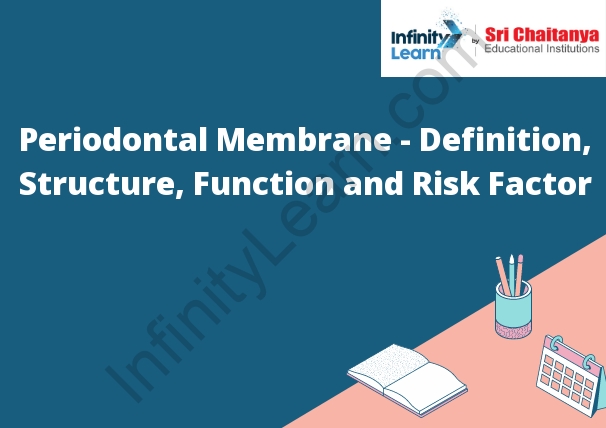Table of Contents
What is a Periodontal Membrane?
A periodontal membrane (or gingival membrane) is a thin, delicate layer of tissue that lines the gums and surrounds the teeth. It is composed of loose connective tissue and is rich in blood vessels and nerve endings. The periodontal membrane plays an important role in the health of the teeth and gums, providing nutrients and oxygen to the teeth and helping to protect them from infection. Periodontal Membrane – Definition Structure Function and Risk Factor.

Structure of Periodontal Membrane
The periodontal membrane is a thin, delicate membrane that lines and surrounds the teeth. It is composed of a simple squamous epithelium, and is continuous with the epithelium of the mouth and lips. The periodontal membrane contains numerous blood vessels, and provides a rich blood supply to the teeth. It also contains numerous nerve endings, which allow the teeth to sense sensations such as heat, cold, and pressure. The periodontal membrane is highly sensitive, and can detect even the slightest touch.
Alveolodental Ligament
The alveolodental ligament is a thin sheet of connective tissue that attaches the alveolar process of the jawbone to the teeth. It helps to stabilize the teeth in their sockets and to keep them in place during chewing. The alveolodental ligament is also responsible for the transfer of forces between the teeth and the jawbone.
Transseptal Fibers
Transseptal fibers connect the septal and lateral walls of the atria. They originate from the septal muscles and course through the interatrial septum to the lateral atrial wall. The transseptal fibers play an important role in atrial contraction and help to keep the atria in a synchronized contractile rhythm.
Loose Connective Tissue
Loose connective tissue is a type of connective tissue that is found in many places throughout the body. It is made up of a network of fibers and cells that provide support and connect other tissues. Loose connective tissue is found in the skin, muscles, tendons, and ligaments, and it helps to hold them together. It also contains fat cells, which provide energy and insulation.
Cell Rest of Malassez
The cell rest of Malassez is a type of cell proliferation that is found in the epidermis. It is named after French dermatologist Frederic Malassez, who first described it in 1874. The cell rest of Malassez is a type of mitosis that results in the production of new keratinocytes. These new keratinocytes migrate to the surface of the skin, where they undergo terminal differentiation and produce keratin.
Oxytalan Fibers
Oxytalan fibers are a type of collagen fiber that is found in the dermis, or skin layer, of the body. This type of fiber is unique in that it contains a large amount of oxygen, which gives it its name. These fibers are responsible for providing strength and elasticity to the skin.
Functions of Periodontal Membrane
The periodontal membrane has several functions, including:
1. Supporting the teeth in the jawbone.
2. Providing a blood supply to the teeth and gums.
3. Secreting a fluid that lubricates and protects the gums.
4. Helping to form the periodontal ligament, which attaches the tooth to the jawbone.
List of Periodontal Ligament Function
The periodontal ligament attaches the tooth to the alveolar bone. It helps to protect the tooth and keep it in place.
Periodontal Risk Factors
There are many periodontal risk factors that can increase your chances of developing gum disease. Some of these factors are within your control, while others are not. However, it is important to be aware of all of them, so you can take steps to protect your teeth and gums.
Some of the most common periodontal risk factors include:
Smoking or chewing tobacco
Genetics
Bacteria in the mouth
Poor oral hygiene
Clenching or grinding teeth
Diabetes
Pregnancy
Crooked teeth
Periodontal Disease Symptoms
If you are experiencing any of the following symptoms, you may have gum disease and should seek treatment from a dentist or periodontist:
Red, swollen, or bleeding gums
Gums that recede from the teeth
Persistent bad breath
Loose teeth
Pain in the jaw
It is important to note that not everyone who experiences these symptoms will have gum disease. However, if you are experiencing any of these symptoms, it is important to consult with a dental professional to determine the cause. Periodontal Membrane – Definition Structure Function and Risk Factor.








